Review: 3 of the Best Entry Level GPS Cycling Computers for 2021
Whether you’re attempting to climb a million feet in a year, have one heck of a long weekend, or riding so much elevation in a day that you need to fuel with enough potatoes to give yourself radiation poisoning, measuring your riding by total ascent seems to be a popular way to go. Whether you pronounce it dayta or dahta, there’s definitely an increasing appetite among mountain bikers for recording rides.
I’m something of a data fiend myself, although I wouldn’t say I’m obsessed with it. I don’t interpret it in the same way as those VO2-hitting, FTP-knowing athletes in the upper echelons of our sport, but I do like to know what’s going on and, without sounding a dab pathetic, I always record my rides, with an emphasis on the total ascent. Like many of us, I both depend upon and decry all kinds of technology. For that, I am something of a walking contradiction. I know social media and apps aren't my cup of tea, but at the same time, I can’t stay away from them. However, the true extent of my technophilic tendencies is betrayed by how much I really do enjoy keeping tabs on my riding and the regularity at which I find myself poring over my accumulative ride time on Strava.
My main concern is that my device be accurate. If you’ve ever gone up for an extra lap just to roll over a certain distance or total elevation gain, then I’m sure you'll understand. I don’t want some arbitrary yardstick - I want it to be able to consistently and accurately compare my riding. I also like to be able to confirm that my heart is beating, and so, yes, I enjoy wearing a heart rate monitor. Speed and power don’t really concern me and aren't metrics I use to measure my rides. In the past, I have ridden with a power meter but I now just embrace the fact that there isn’t much difference between an “incredibly small amount of power” and merely a “very small amount of power” and so I have pushed it beyond my concern.
For this group test, I chose to review products that are all around the €200 mark ($240 US). This isn’t a small amount of cash, but in GPS terms it isn’t bouncing off the rev limiter either. The units that fit the bill are the Garmin Edge 130 Plus ($200), the Wahoo Elemnt Bolt ($230) and the Lezyne Mega XL ($200). I tested them over a period of a month and all the riding was done on the same climb. Also, to qualify my statements, when I say things ‘aren’t accurate’ this is related to OS maps and also how they correlate to one another, and whether indeed the information they provide is something of an outlier.
Essentially, I wanted a device to be consistent and easy to use. I have considered navigation, although it isn't of primary importance to me.
Garmin Edge 130 Plus
Garmin is now synonymous with GPS for many mountain bikers thanks to the long-time presence and the sheer number of units they offer. From their Edge series of cycling computers to their watches and sat-navs, they’re the only company of the three that I would say is a household name. The unit reviewed, the Edge 130 Plus, sits as a near-entry level piece. It’s similar in price to the Edge 520, but as the newer product, I decided this would be more appropriate to review.
Edge 130 Plus Details
• Weight: 33g
• Screen Size: 1.8” (46mm)
• Price: $200 USD
• Claimed Battery Life: 12 hours
• garmin.com
• Weight: 33g
• Screen Size: 1.8” (46mm)
• Price: $200 USD
• Claimed Battery Life: 12 hours
• garmin.com
The device is clean looking and almost minimalist. It's small and light and its 1.8” (45.7mm) screen displays well in a mixture of light conditions. Setting it up was relatively easy thanks to the somewhat sleek Garmin Connect App. While the walkthrough process did indeed help set up the device to near completion, it would be nice if data fields could be set via the phone, as opposed to the buttons on the unit itself. The 5 button setup is fine, and if you want to make changes without your phone you will be relying on them soon enough, but it’s not with the same ease as the Wahoo system, where you drag and drop your data fields to the place of your choosing via the app. It’s particularly annoying when you’re hunting through setup pages. It could be the small device, the software itself, or my hamfistedness, but either way it wasn’t as easy as I would have liked.
I opted to run 7 data fields on all these devices. Even though the Edge had the smallest screen on test it displayed the data clearly, even if it wasn’t as quick to jump out at you should you be glancing down at the unit. I appreciate though, that many people wouldn’t run this many fields. The device also used a breadcrumb-trail style of navigation. Using a Strava account to make routes and sync them with your device was remarkably easy. It was perfectly adequate for my purposes but if you require heavily detailed navigation it might be a little lightweight.
The unit looked clean and, it is worth noting, is the only device to come with a tether. I was sent the ‘mountain bike set’ which included a mount that could be used to place the device behind the bar and over the steerer, although this wouldn’t be included for the $200 model. The problem, in my mind, is that a 40mm stem and high rise bars don’t often play that well with GPS mounts. Of the three, Garmin does have the most aftermarket options though, should the elastic band setup not be adequate for you.
Upon running the GPS for the first time it seemed, in terms of elevation, wildly inaccurate. It’s at that point I realised the default setting was going solely off GPS, as opposed to GPS/Glonass. This second setting proved to be more accurate, although I don’t know why it wasn’t the default.
Even though it was more accurate in this setting, at least in my experience, it did seem to pluck numbers out of thin air. I would always give some time for the GPS to load before riding but it measured my home at an elevation of anywhere between 150m to 350m above sea level, where in actuality it stands at 192m. This might all seem trivial but if you buy a device to measure elevation it’s important. My ride data was probably, on average, 20% out. I know this makes me sound like a bit of an idiot, but all those aforementioned climbing challenges demand some parity between devices. If you found yourself doing 20% extra on an Everest then you'd probably find yourself caring too.
There were some rides where on the usual climb, the device would not be adding any height whatsoever, and on one occasion the current elevation was decreasing as I was going up what I was almost certain was a climb. I mean, I was in the 50T, my feet were stamping on the pedals and it felt like my legs were flailing like Micheal Flatley on a sugar high but maybe I was mistaken.... Sarcasm aside, the unit really disappointed me in this regard. I think it was more of a source of frustration than gratification on most rides. I don’t really want much of a GPS, I just want consistency, which brings me on to my next point.
The Edge 130 Plus is packed with features. I think Garmin have been very ambitious. There’s Climbpro, auto-lap, drink reminders, food reminders, grit scores, jump scores and incident detection. For me, this was just too much and I turned them all off. The jump feature was a particular frustration as it would just never be quiet. If I turned off the noise alerts, I lost the sound for my messages too. On my days off I tend to ride with my phone on aeroplane mode, but when I'm nipping out for a lunchtime lap I like to be able to be contactable. With the 130 Plus it does have the sensible feature of disabling the incident detection for off-road riding though, to save any false readings.
One of the elements of the unit I really liked was how it connected to your phone. You wouldn't have to boot up the Garmin Connect app for it to offer seamless uploads and text notifications. This was the only device on test to do this, the other devices required you to start up the app to establish a connection between the phone and device. The Garmin can also make benefit from custom fields through the Connect IQ extension. This will really be to some people's liking. Its 12 hour claimed battery life also checked out.
I think, and it may sound a little bit self-satisfied, but we’re in a world where any piece of technology becomes as much about validating its user as it does about its original purpose. Phones, for instance, are more about dopamine hits than ringing mother dearest. The drawback of having a mobile is fast becoming that you’re at risk of somebody ringing you on the bloody thing. I’m kind of loathed that the device seems to willingly go into this. Personally, I want a training tool and not a training partner. The jumping feature feels more "Napoleon Dynamite" than it does "Red Bull Rampage". To test the feature, I did a bunny hop rolling down a fire road. It congratulated me on doing a 4.5 meter jump. If anyone has seen my bow-legged bunny hops in full flight they’ll understand that this is a gross exaggeration and, without getting slightly facetious, I wonder what this will mean for the slightly over-confident beginner, the local double and a somewhat irresistible pull towards appearing in Friday Fails. Eventually, I could take no more and I turned off the noise-alert for good, if only so the beeping would abate. I don't need to be told that a computer thinks I've done a "great jump!".
It’s a nice device, it looks tidy and is very small and lightweight. I’m sure it will offer a lot to a lot of people. However, my only regret is that I should have included the older, and now price-reduced, Edge 520. It’s a far superior device, in my opinion. I imagine that over the next few years Garmin will refine and enhance their features to become something like industry standards, I just feel that it all asks too much for something that struggles to do the basics correctly. If you don’t care about elevation but do enjoy a feature-laden device then this isn’t a bad option, but I would struggle to call it the best.
Pros
+ Lots of features
+ Minimalist and low weight
+ Automatic phone connectivity
Cons
- Lots of features
- Accuracy
Wahoo Elemnt Bolt
Wahoo is a company that’s quickly progressed from cheeky little upstart to industry titan. It specializes in all things training and its product line, which originally started off as Ant+ accessories, now consists of Smart Training devices, watches and also GPS Units. The device we tested was the Wahoo Elemnt Bolt.
Elemnt Bolt Details
• Weight: 62g
• Screen Size: 2.2" (56mm)
• Price: $230 USD
• Claimed Battery Life: 15 hours
• wahoofitness.com
• Weight: 62g
• Screen Size: 2.2" (56mm)
• Price: $230 USD
• Claimed Battery Life: 15 hours
• wahoofitness.com
Firstly, setting up this device was by far the easiest. Wahoo have done a great job at making their app a genuinely easy experience. It’s intuitive, gratifyingly concise and, as a friend of mine put it, “Garmin or Wahoo is like Android or iPhone” and it kind of gets it in one. The data fields can be changed on the fly and everything is where you would expect it to be. Once using the device, you can also use the two side buttons to zoom in and out your chosen data page to increase or reduce the number of data fields. This is a good feature but, to be truthful, the app did such a good job of setting up the device I initially hardly realised that there were side buttons at all. There is also the option of scrolling separate data pages.
The unit comes with an "out front" mount in the box. This is a nice touch for XC or road riders but for mountain bikers, it’s not particularly useful and, if anything, highlights one of my gripes with the device. On the front edge of the device, it’s shaped so it cradles the mount to allow air to "slip past". I don’t know how fast you have to go to reap this benefit but, I’ve got to tell you, I don’t think I'm in danger of getting there.
The problem is, due to this cuff you can’t run the mount backwards and have it over your steerer. It’s also annoying that they do sell a tether but it’s not included in the box. I would rather have a small and useful tether, rather than a large mount that can only be used on a road bike. Not only does it look, to me at least, kind of absurd to have a device sticking out the front of your bike much like an underbite on a jack russell, but I also have concerns that having a device there is asking for trouble in terms of impact. There is a small bolt offered the secure the device to the mount but for the aforementioned reasons, I didn’t feel this was useful if even relevant to the needs of mountain bikers. That all being said, the second and more typical mount included is secured by cable ties. It works well and seems very secure.
Unlike the Garmin, the app doesn’t seem to work in the background and to enable auto-upload and text notifications you will need to have it running. It’s not the end of the world but it would be an added bonus.
The device seems to navigate well. While it doesn’t benefit from the large screen of the Lezyne, the way the Elemnt uses the 2.2" (56mm) screen is quite efficient to give turn by turn directions. It comes with road maps already loaded and has ample room area to convey the information. Yet again, it’s the sheer functionality of the software and integration with the app that makes the Wahoo so enjoyable to use. Loading a route was so easy and done with minimal fuss. The middle-of-the-road 15 hour claimed battery life proved to be justified, too.
As for using the unit itself, I think it was the strongest on review. The data was always very accurate and never left me second-guessing. I even went high into the mountains in a heavy downpour when it was particularly cloudy and it never skipped a beat. This is normally a condition that GPSs that use barometers struggle with but the Wahoo held its nerve.
Another really nice feature of the Wahoo is the end of ride summary. It will tell you running weekly totals and I found it to be quite useful. To be honest, I have little interested in the projected fatigue that a unit might throw out after seeing a mere snapshot of your life, but running totals are useful as it helps me make up my own mind.
Pros
+ Best companion phone app
+ Very easy to use
+ Most accurate on test
Cons
- No tether included
- Its shape doesn't give as many mounting options
Lezyne Mega XL
Lezyne is a company that seemingly makes every bicycle accessory you could imagine. Tools, lights, pumps and, as of a few years ago, GPS units. But how does this unit stack up to the two big players of Garmin and Wahoo? To glance at the tech sheet, one thing that stands out is the long 48 hour claimed battery life. It didn't quite make 48, which might have been may well have been my settings, but it was close.
Mega XL Details
• Weight: 83g
• Screen Size: 2.7" (68.6mm)
• Price: $200 USD
• Claimed Battery Life: 48 hours
• lezyne.com
• Weight: 83g
• Screen Size: 2.7" (68.6mm)
• Price: $200 USD
• Claimed Battery Life: 48 hours
• lezyne.com
Unsurprisingly, the Lezyne Mega XL is by far the biggest unit on test. This is something that is going to be down to the individual but I really liked the size of it. It also has the distinction of being able to run in landscape or portrait mode. It was one of those lightbulb moments and I thought "Why doesn’t everyone do this?". It’s a vastly superior orientation in my mind. I think it allows for a high number of data fields, again 7, to be shown particularly efficiently. I think it also lends itself to the needs of mountain biking very well. I wonder if we tend to see less landscape GPS displays due to the adverse aerodynamics it would offer a road cyclist.
The device was relatively easy to set up although its app is probably the least sophisticated of the three. The app feels far removed from the iPhone or Android debate and feels more like Windows 95. It works, and you can change data fields using your phone. Like the Wahoo though, it requires the app to be booted up to send your phone notifications and uploads. Also, even though I selected the Auto Upload setting, and double-checked numerous times, the device would only upload the rides by manual selection.
The device seemed accurate, except for one ride where it went completely off the rails. It only did this once though and didn’t seem to make a habit of it. When I turn on the device it tends to over-estimate my elevation by consistently 40m. This then seems to level out as I commute to the trails. This isn’t a problem for me as I have a relatively flat 3km commute to the trailhead but for those that do climb straight out the door, this might be irritating.
The Lezyne is a big unit, with a screen size of 2.7" (68.6mm), and is the heaviest of the three at 83g. Mounting it wasn’t all that easy. As I mentioned earlier, a short stem and bar didn’t really mate that well with GPS units. I eventually went for a slightly adventurous mounting over my stem. That ride, coming through a particularly fast and rough section the unit was jettisoned off the side of the trail due to a band snapping. Was this the unit's fault? Well, of course not, but it did highlight the use of a tether and this unit's incompatibility with one. It’s a really big drawback for a device, in my opinion. It’s not that I don’t think it’s secure to the mount but rather it ensures that even if the mount works loose your unit won’t go anywhere.
I managed to find the device in the undergrowth by using the signal strength indication in the app to triangulate its location. It wasn’t a big deal but it was a half an hour faff that could have been avoided. The placement I eventually settled on was using some cable ties to overlap the mount. It was a little fiddly to set up but it’s at least secure.
The Lezyne, with its large screen and full mapping, work well with one another to aid navigation. Yet again, the app seemed to be the largest obstacle and it required a thorough googling. You have to download a route from your PC to then upload it to your Lezyne Roots account, which will subsequently sync with the GPS. Easy, once you know how. Then, once it’s on the app you click start on the phone app to start the route, and it will work on the unit. This was all somewhat bewildering and made me feel a bit of a neanderthal but I got there in the end. For comparison, the Wahoo took me around 15 seconds.
It also doesn’t come with maps pre-downloaded. You actually take a screenshot of the area that you would like to use in the app and then it syncs. Yet again, it didn’t strike me as particularly intuitive.
I never quite clicked with the four-button operation and I always found myself second-guessing what I actually wanted to do. This would probably lessen, should I spend more time on the device, but it was the least intuitive of the three to use. Also, rather curiously, the time of the day display seemed to have a will of its own and I tended not to trust it. When paired to the phone it worked well but on one occasion, when left to its own devices, it just decided that it was going to run 20 minutes out.
I actually quite like the Lezyne and it’s a device that I would not be disappointed with if I were to use it long-term. It offers excellent battery life, seems robust, well made and the sheer size of it lends to being very good at relaying data. For me, the biggest hurdle was the app and the buttons. I never quite found it to be anywhere near intuitive, even though I gave each device a week of solid use whilst riding every day. That said, if you demand something that is reasonable, if not irrefutably accurate, you can navigate the app and get used to the button operation, this could be a very good device indeed.
Pros
+ Can be used in landscape mode
+ Long battery life
+ Seems particuarly robust
Cons
- The app isn't great
- Buttons will take some learning
- Time of the day isn't always accurate
- Device can't be tethered
Pinkbike's Take
Author Info:
Must Read This Week
[UPDATED] Final Elite XC Results & Overall Standings from the Mairiporã XC World Cup 2024
41719 views
41719 views
Sign Up for the Pinkbike Newsletter - All the Biggest, Most Interesting Stories in your Inbox
PB Newsletter Signup
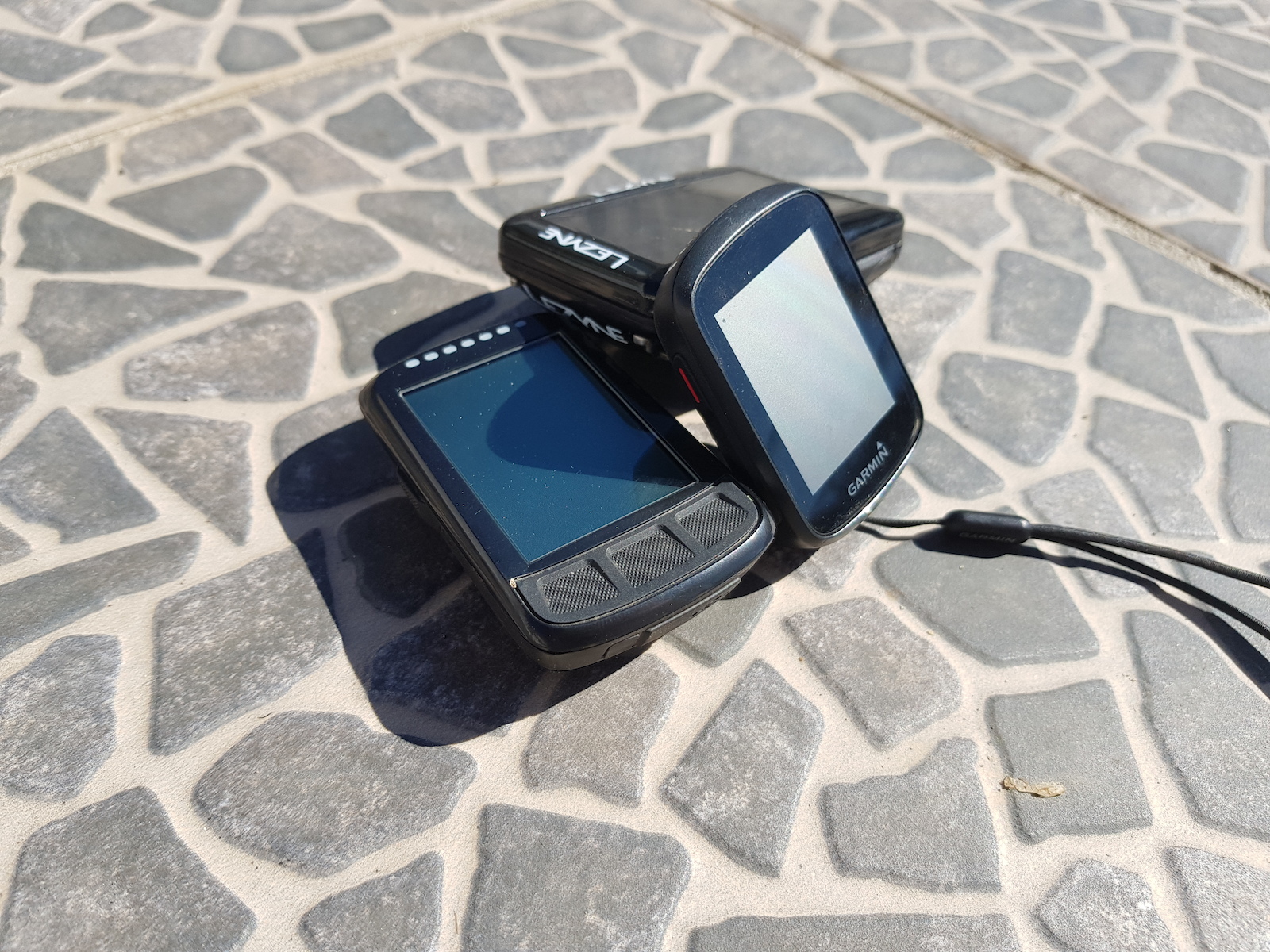
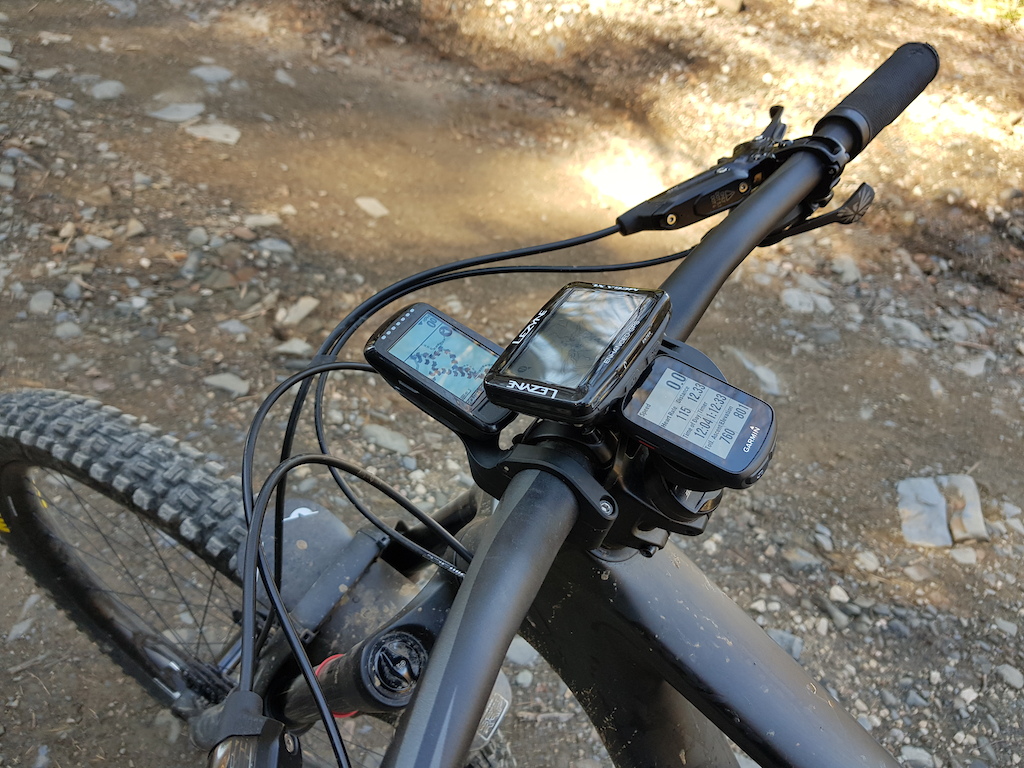
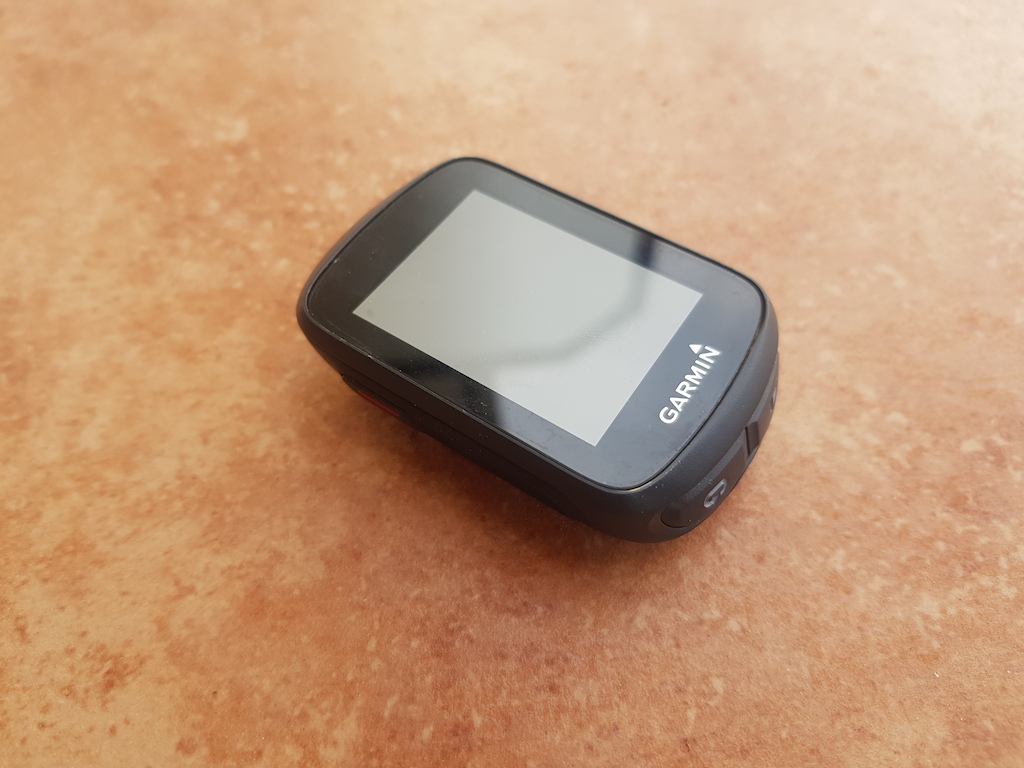
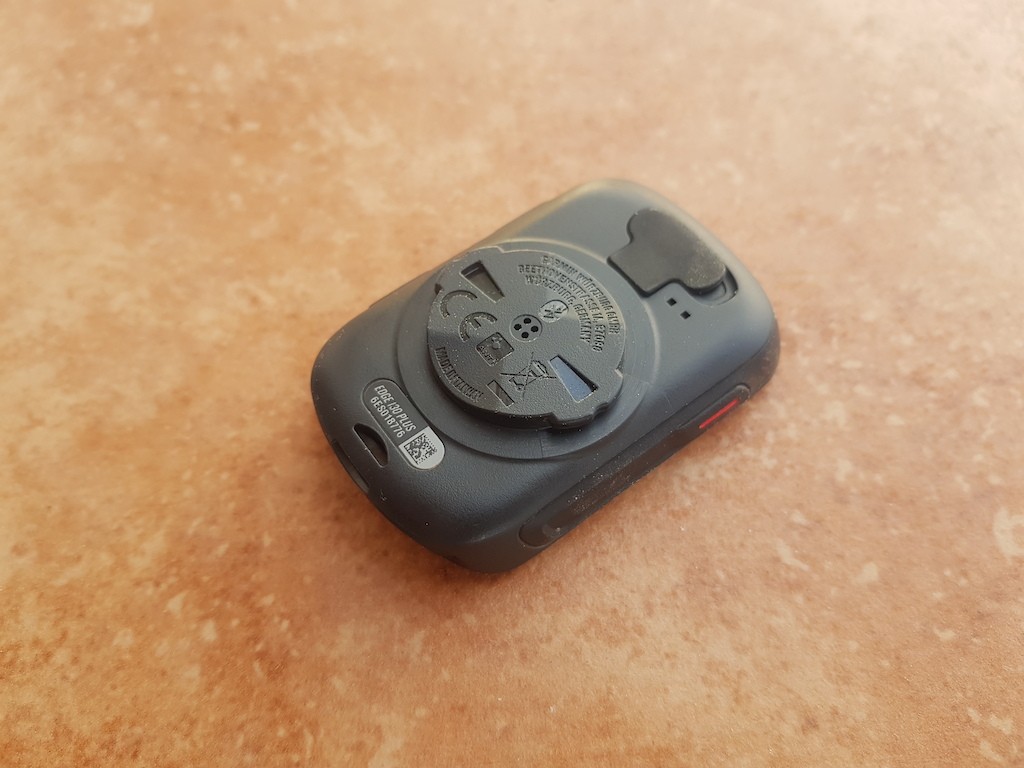

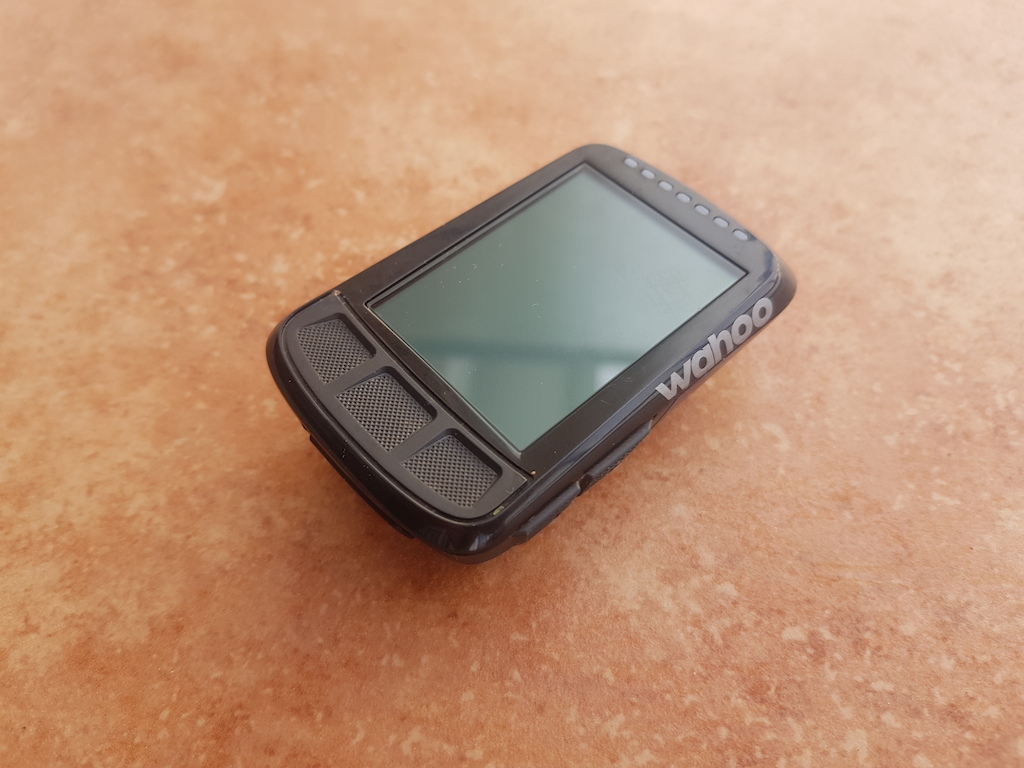
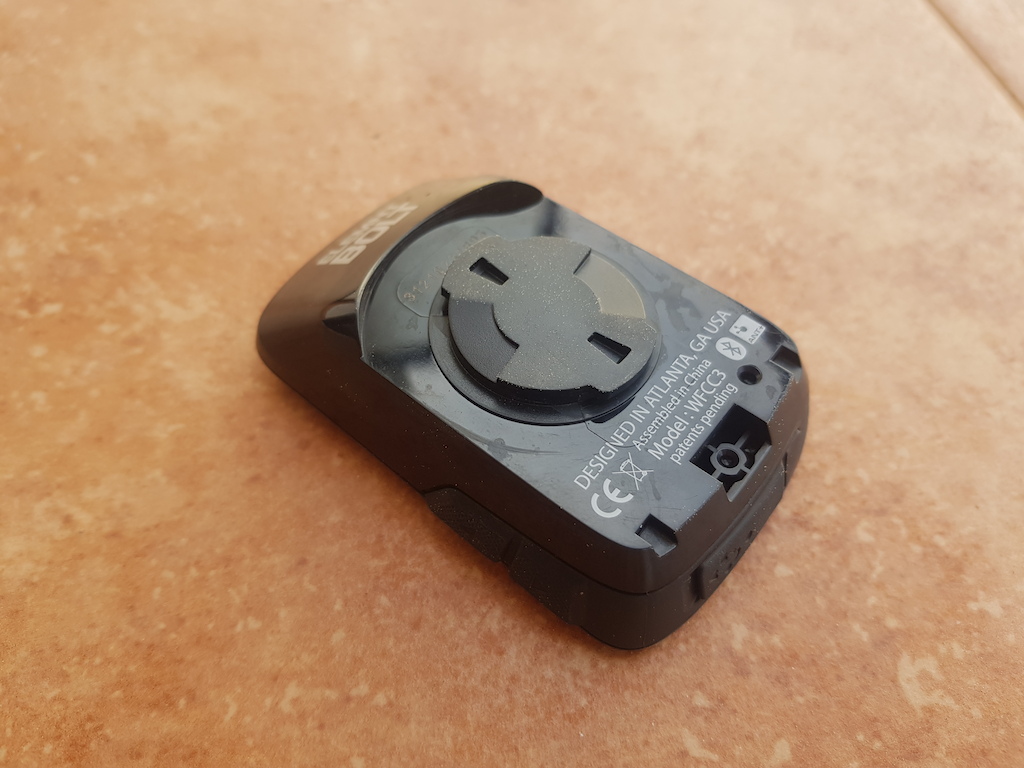
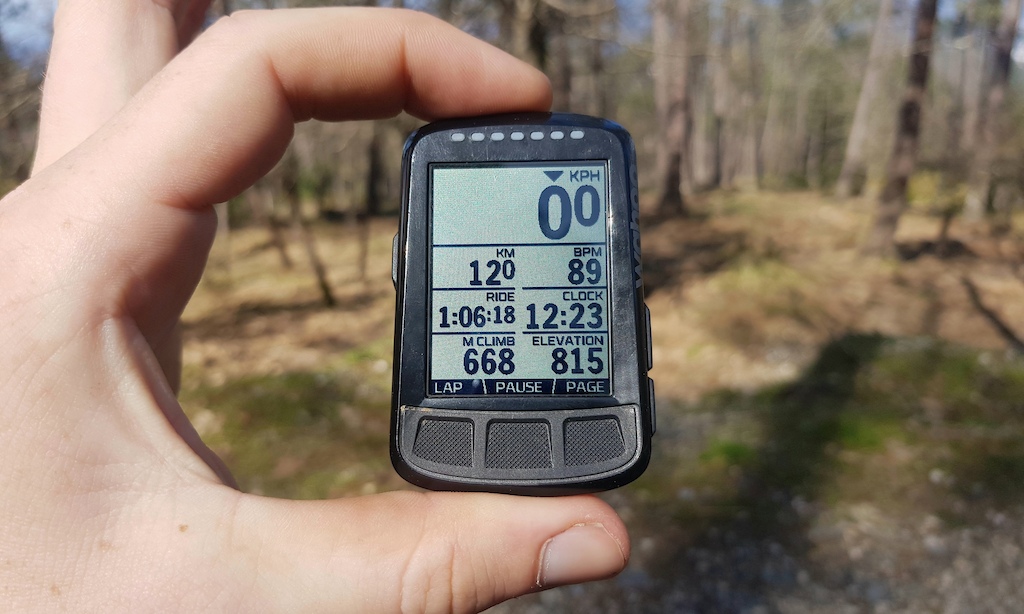




My phone is just as accurate as the gps in my car when driving.
Tracking all day without running down the battery of your only communication device in case of emergency.
Head units will pick up on not just HR sensors, but your other ant+ sensors on the bike, electronics like di2 or AXS, and (speaking for garmin) have preloaded maps that are normally over and above what even good crowdsourced ones like trailforks pro or Strava will offer - not just trails, but old fire roads, service roads, etc. that might be reclaimed by the woods but offer a quick shortcut out if something bad happens or you just need a quick way out (I’ve lost track of how many times it’s getting late and the garmin has a quicker route out of the woods than trailforks does). Longer battery life, while still using gps, glonass, etc. Especially if you have the $, a cheap unit like this is a no-brainer. If you don’t want a head unit, springing for a garmin smart watch with mapping is a great redundant unit if you need it as well - plus, much better for gym/hiking/running or whatever.
They do have plenty of other features like bike alarms, crash alerts, etc that I don’t personally use but I’ve had some riding buddies swear by. And while other people might not care about the training metrics, the estimated vo2 max, training with power, calorie/water burnt, perceived exertion, live segments, and rest of the bevy of integrated training aids all in one place which are far beyond what you’d get with a smartphone.
My riding partner is a tech geek and he has cycled through every top end garmin released over the 20yrs we've ridden together and they do not seem to be any more consistent than even basic devices and I suspect that is because we primarily ride in forest. There will be a 10% differential sometimes in the forest, and despite his reluctance to see it, both devices vary (it's obvious when you ride the same lops on track on Strava). On the road they're about the same... we did a 200km ride last year in wide open terrain and I rode 100m more to get the same distance, pretty good for 5x less money.
Biggest downside to Garmin seems to be satellite locking... he turns his unit on when he arrives and often it still hasn't locked on to a satellite. And my wearable battery lasts longer.
This year I've begun *seriously* racing and the GPS is an absolute game changer. No need to carry a phone for a race, and I can see how long I've been racing (my time) my heart rate (important to manage) my distance (when do I start my kick?) and more. And if you find yourself being a d*** about KOM's, well, you can set up the Garmin to time a specific segment and it will help you beat your PR's or the KOM (for ascents... wouldn't try checking a screen while ripping descents).
I will also say the nav features of a Garmin are very helpful for road / gravel rides. Never really used it on a trail system on mtb, but great for learning new routes without having to continually take out my phone and check Google Maps.
(2) "Well, I ride in the wilderness so there's no cell reception anyhow" me too, but I can still get a call or a text when I happen to be in the satellite footprint every now and then and that's important to me.
(3) I definitely do not want to put my multi-hundred $$ phone on a mount on my handlebars because it may get damaged in a fall or get mud/water splashed on it.
(4) "I use an old phone just for tracking my rides" Then you've just spent a lot of money on a complex device when you could've saved $$ on a simple bike computer.
(5) "I got my spare/bike phone for $5 at a garage sale" Okay - you win.
Likewise when my GPS is actiing up so I run Strava on the phone, and then later compare tracks, the phone's route is always more accurate.
Regardless I continue to use a GPS for a few reasons. First, my cellphone is my safety net, so it usually stays in the middle of my pack, sometimes turned off. No need to be draining the battery if I may need it a few hours later. Second, I like having the computer on the bars. I like knowing what time it is, how far I've gone, and sometimes having a map available.
And finally, I really appreciate having my Garmin tell me that I just got 0.23 seconds of airtime off that last jump. Just kidding, I don't appreciate that at all.
I also use a heartrate monitor which seems to connect to the Wahoo easier. I also use cadence on road rides (rarely on mtn bike rides unless I'm using clipless).
The other thing is, all three of these devices, especially Garmin and the Wahoo devices (not sure about the Lezyne Mega), will have ANT+ wireless device tethering. So, you can attach a speed, cadence, heart, power meter sensor to that device. It's pretty cool. Also, I discovered that the ANT+ wireless signals are unaffected by LED emissions. So, recordings won't be cut off when you ride at night with any handlebar lights turned on. The speed/distance is also more accurate when you have the speed sensor calibrated to the size of your wheel with the tire on. Again, some of my friends don't calibrate this and depend on the Garmin sensor to do the averaging over a long distance or have Strava average out the distance, it can sometimes lead to either shorter or longer than expected results. On Strava, I also noticed that if you're in the trees or tall building in downtown, the GPS signal might now reach your device. So, you may lose a whole lot of distance on recording.
I use data on the road when I have nothing to look at but white line for 100km (roads in my area are straight and boring AF).
Altimeter changes daily even in the same location.
You need to lower the sampling frequency, surely you do not need to measure your position every 5 seconds
- IMO the use of hard buttons instead of a touchscreen is an absolute plus, but that's half the reason I bought it. It has four buttons; if you can count to four, you can figure out how to use them.
- The app is definitely a bit clunky, but not unusably so. It's just basic. It's easier to set up the device through the app than through its own menus.
- I've never had any trouble with the time being incorrect. It gets its time from GPS so I would be very surprised if it ever was!
- I'm not sure what "device can't be tethered" is supposed to mean. It can auto-upload activities to your favourite tracking website, display live segments and phone notifications, among other things, but I don't use most of those features so maybe I'm missing something.
- Its navigation usability is probably a bit behind the others, but you absolutely can feed it a route that you've created in Trailforks or whatever. The Mega C with its colour screen might be better for this.
- Updating the device's firmware requires plugging it into your PC. It presents to the PC as a USB mass storage device so you can back it up very easily.
- The GPS traces it produces are pretty accurate. I've seen Garmins do far worse.
- The barometric altimeter isn't very accurate, but miles ahead of a wearable.
@pbuser2299: The mount is a metal plate now, so they must have had to replace quite a few for that reason.
I can't say I understand why the clock went out of sync, but I can certainly say that it did. It was very weird as I thought the whole premise of triangulation was based on timing. Ha! I assume it must have been some kind of bug.
Edit: Just to give my 2 cents, I find the unit works very well and I bought it specifically due to the battery life so I don't have to charge it every night. The black and white screen can be hard to read in low light situations when the backlight is overkill, but the display is easy to read and use otherwise. My only real gripe is that when riding gravel often the dirt roads are not displayed (to declutter the screen) when zoomed out far enough to see where a road goes when riding out in the country. I used it for a race that took 11 hours to complete and finished just after nightfall and had enough battery using GPS guidance the entire time (and some backlight usage in the evening). In the before-fore times (pre-covid) it was available as a bundle with Ant+ HR strap, speed and cadence sensors for $300 which saved a fair bit of money compared to buying separate sensors. I don't think the speed & cadence sensors are very useful for MTB so those live on my gravel bike. There's aftermarket stem and steerer tube mounts that I use for MTB and they work well, I don't think the unit has been dislodged during a crash yet. My previous bike computer (powertap) got scratched up pretty quickly so I got a screen protector and latex cover and haven't had any damage to the unit yet 2 years and many crashes into its life.
The only reason you would need the app to run in the background is if you use the Live Tracking feature which requires the phone to send updates out to whomever you want to know where you are.
Hopefully, we'll be making some videos at some point. Right now the focus is largely on making my writing at least semi-coherent. Haha!
Now - I know that plenty of PB commentators hate Strava, but even though I'm not going out and KOMMING all over the competition - I do like to see evidence of my progression.
Garmin's Strava live segment integration is pretty cool. There are different ways to set it up, but the way I have it, when I start in on a segment I've favorited in Strava, it'll pick someone I'm friends with on Strava with faster-but-not-impossibly-faster time than me, and compare my pace to theirs.
Sort of like "ghost times" from racing video games.
When I'm not trying to push it, it's easy to ignore or turn off. When I'm trying to get a PR or beat one of my friend's PRs, it's great feedback.
I'm pretty sure I'd kill myself if I looked down at my GPS on downhill segments, but it's great for climbs.
I think Wahoo at least has a similar feature, though I've never used it.
Also, one of the reasons I'd consider upgrading to the Edge 530 over the 130 is Trailforks integration. It makes it pretty easy to import trails or routes from Trailforks into your GPS. Great for when you're in a new area for navigation without taking out your phone, or pacing yourself on longer rides when it'll tell you how much elevation and distance you have left.
- Wet rides = elevation goes bonkers
- If you stop the ride, it will shut off while you're busy gramming, giving you a few secs warning for you to stumble back, fall over your bike piercing your spleen on the bars and save the ride rather than stop the unit from shutting down. Then it takes ages to boot back up. But if you switch it off and plug it into a charger, it will switch back on with a mighty beep-beepity-beep. And never switch off.
- Every 2nd Garmin update will mean that auto-upload stops working, so you'll need to save the ride & reboot the unit then manually upload 5 times until suddenly it works.
Contrary to what other people say here, I find that if you want a KOM, better use your iphone, as you can get lucky, especially on short segments. You might up getting KOMs on segments a few hundred metres in all other directions from the one you're riding too.
I'm happy with my Garmins, all in all. I like keeping track of the time, HR and time of day while I'm riding, and of course mapping out courses and following them. I run OSM maps which has saved my confused self from getting lost many times. Trying to figure maps on the phone with sweaty/muddy/cold/wet fingers just doesn't work. Too much faff.
I don't give many tosses about KOMs, but I'll do everything I can to extend the experience of a ride. Stats, maps, video, SoMe, whatever.
That Wahoo, though...tempting.
The 530 is a great tool when riding in areas I don't know well -- a good enough reason to buy it right there if you don't only ride your home trails. I've found integration with Trailforks to be a great feature but the Forksight or whatever it's called is baffling. Who thought it would be a good idea to send the map display for a quick spin every time the device senses a stop?
Other than that, I find the unit tries to do everything; its interface is challenging and I find myself far too often poring through the manual (Garmin manuals should be prescribed reading for tech writers in How NOT to Do It 101) trying to figure out how to make changes.
I guess I assumed Garmin phone integration was the industry standard. It is convenient to receive notifications without extra trailhead steps.
The most frustrating one was the auto end of a ride when you accidentally bump the right bottom button on the 830 (just a bad placement of buttons by Garmin - the 530 is better in this respect). I guess through some firmware updates, Garmin fix the issue where it'll ask you to end the ride. If you didn't notice the popup message and start riding, the thing will continue on recording as usual or you can cancel the end to save your ride. Before this update, I would fumble around and accidentally end the ride and basically need to start a new ride. Then, my ride is broken into two pieces on Strava - really sucked.
After 2 years and 2 months, the wings of the mount on the device broke of while riding from the parking lot to the gondola. I used it a lot, had it mounted on the stem cap with a K-Edge mount and used it on park days as well. I had some crashes with it and it got ejected twice. But on that day I just left the car, makes me think that the plastic got tired of all the vibrations. I got in touch with @Lezyne and my reseller. No chance to get it repaired, they don't have spare mounts/baseplates. The company advertises with Danny McAskill and makes you belief, that this is a tough unit.
I carry it in my pocket or backpack now, as I like the peace of mind with the live tracking. But I'm not going to buy one again. For the Garmins, there is at least an aftermarket selling metal mounts if you break them.
I now have an Elemnt Bolt and it's much better, the phone user interface is great, it connects well, and works great in forests.
Have it mounted on the top tube using a 76Projects Enduro Mount.
As of May 2021, the Elemnt Bolt is still sold out at their website.
Oh yeah, they paid attention to where they were going so they could find their way back.
As to recording your ride , you can use the same device that one would use to navigate , it's called , MEMORY.